#77 in Vietnam
Bánh Căn: Basic Information
Pronunciation
Alternative Name(s)
Dish Type
Course
Mealtime
Popular Variations
Bánh Căn: Ingredients and Preparation
Main Ingredients
Main Cooking Method
Preparation Process
Bánh Căn: A Deep Dive
Cultural Significance
Taste
Texture
Aroma
Color
Serving Style
Serving Temperature
Accompaniment
- Garnish: Fried shallots and chopped scallions sautéd in oil
- Protein: Hard-boiled eggs, pork skin, braised fish, fishcake, xíu mại
- Fruits and vegetables: Green mangoes, green star fruits, lettuce, extra chili peppers
- Dipping sauce: Nước chấm, mắm nêm, peanut sauce, shacha sauce or ground chili pepper, fish soup broth, braised fish or xíu mại sauce
Occasions
Seasons
Special Diets
Calories
Popularity
Popular Similar Dishes
- Bánh Khọt
- Bánh Xèo
- Appam
- Serabi
- Bindae-Tteok
Popular Dining Area
Bánh căn is a Vietnamese mini pancake-like dish popular in the central region, especially in Ninh Thuan, Binh Thuan, and Khanh Hoa provinces and Da Lat city in Lam Dong Province.
It is made from rice flour batter topped with various ingredients, such as scallions, eggs, minced pork, or seafood.
Locals cook bánh canh in a special pan with round molds. The pan is made of clay or cast iron, with Bau Truc village in Ninh Thuan as the leading supplier of the clay variant.
The cook brushes the molds with oil, adds rice batter and toppings, then covers and fries bánh căn until the pancakes are golden. Bánh căn is typically served in pairs with various savory dishes, vegetables, and dipping sauces.
There are more interesting facts about this traditional dish and street food waiting for you, such as its origin, main ingredients, accompaniments, upsides, and downsides. I will also cover commonly asked questions about bánh căn and suggest similar dishes.
Key Points
Bánh Căn Images
What Is the Origin of Bánh Căn?
Bánh căn hails from the cuisine of Champ people, an ethnic minority in Central Vietnam. The origin of the name isn’t clear, but some people speculate that it was actually derived from “căng” (“swelling, puffing”), referring to how the pancake puffs up after steaming.
Bánh căn is the inspiration for bánh khọt, a well-known mini pancake dish in Southern Vietnam. Over its long history, bánh căn has also developed into many variations, especially in the central region. Those variations feature a wide range of ingredients and offer many different flavors.
What Is Bánh Căn Made of?
Below are the 6 main components of bánh căn, including the garnishes and accompaniments.
| Components | Characteristics |
|---|---|
| Rice batter | Made from rice flour, tapioca starch or cold rice, water |
| Toppings | Eggs (especially quail and chicken eggs), seafood (such as shrimp and squids), pork |
| Garnish | Fried shallots and chopped scallions sautéd in oil |
| Accompaniments (protein) | Hard-boiled eggs, pork skin, braised fish, fishcake, xíu mại (pork meatballs in tomato sauce) |
| Accompaniments (fruits and vegetables) | Green mangoes, green star fruits, lettuce, extra chili peppers |
| Dipping sauces | Has one or several of the following choices: Sweet and sour nước chấm (Vietnamese dipping sauce) Mắm nêm (a type of pungent fish sauce with fermented fish solids) Peanut sauce Shacha sauce or ground chili pepper Fish soup broth Braised fish or xíu mại sauce |
The diversity of toppings and accompaniments is a significant advantage of bánh canh. Let’s discover other merits and possible shortcomings that this pancake dish has.
Pros and Cons of Eating Bánh Căn
Bánh căn has the positive and negative attributes below.
Pros
Cons
With these pros and cons in mind, complete your understanding of bánh căn by exploring the answers to commonly asked questions about this pancake dish.



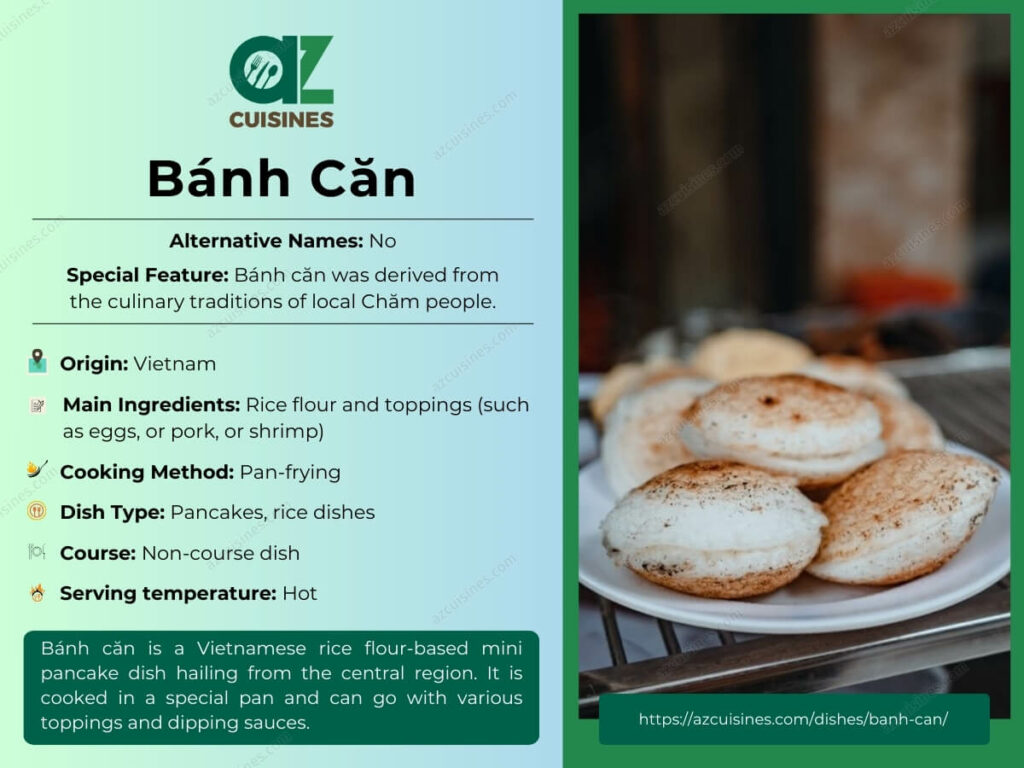
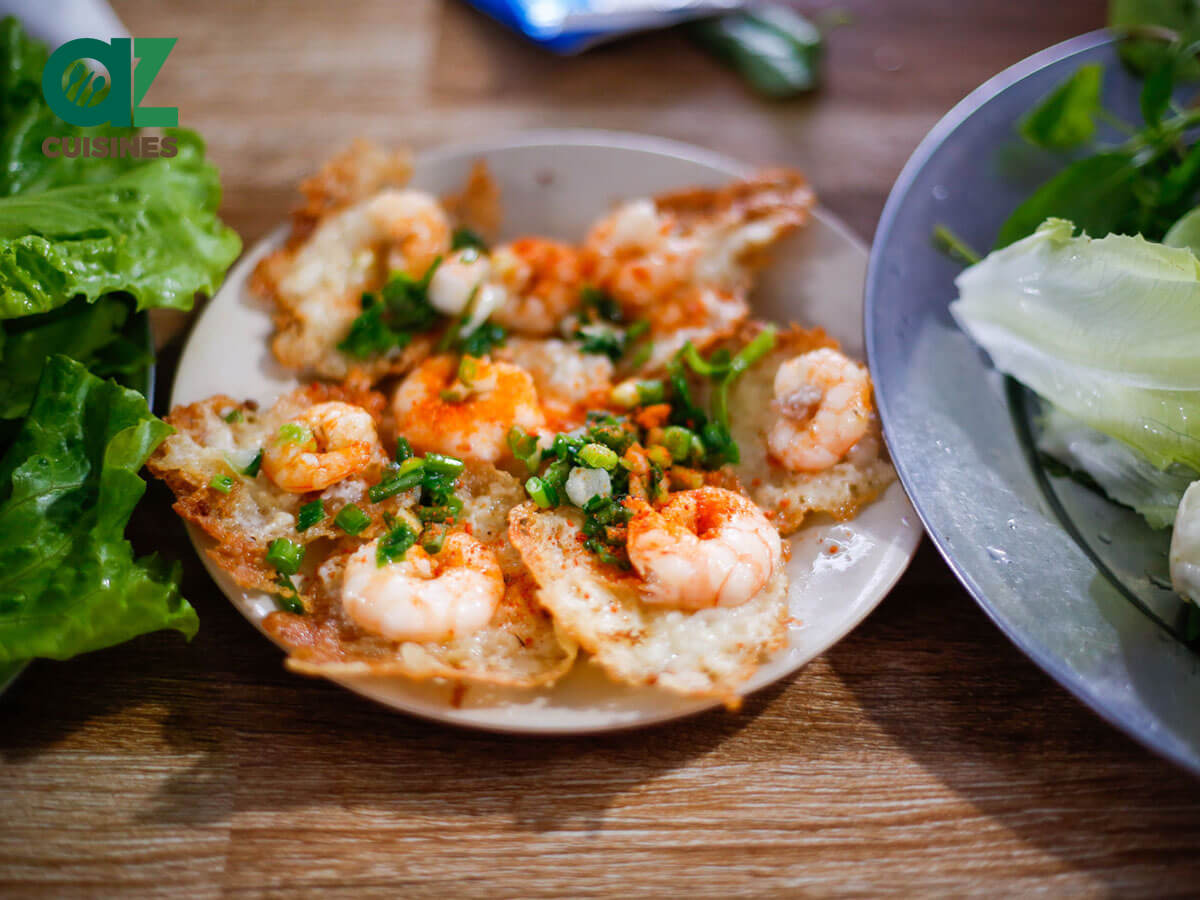
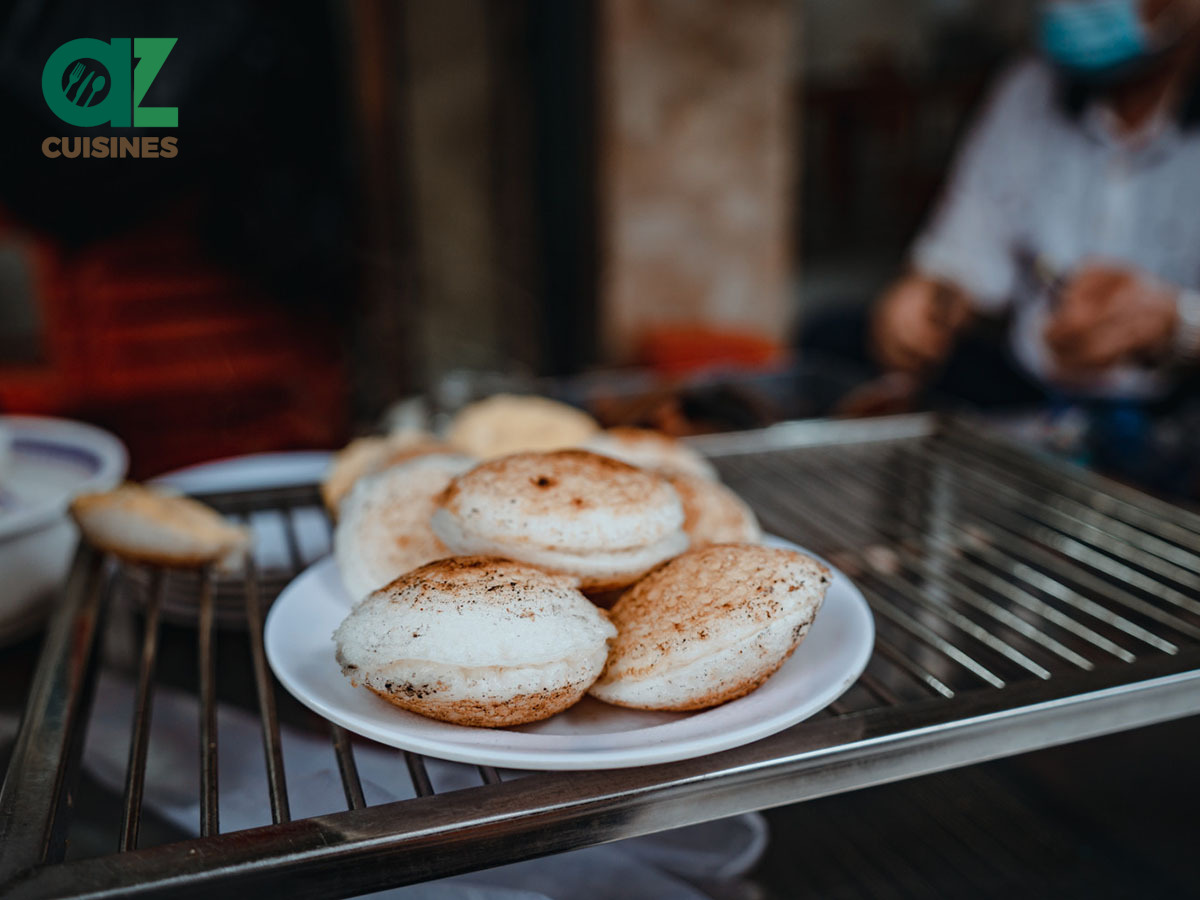

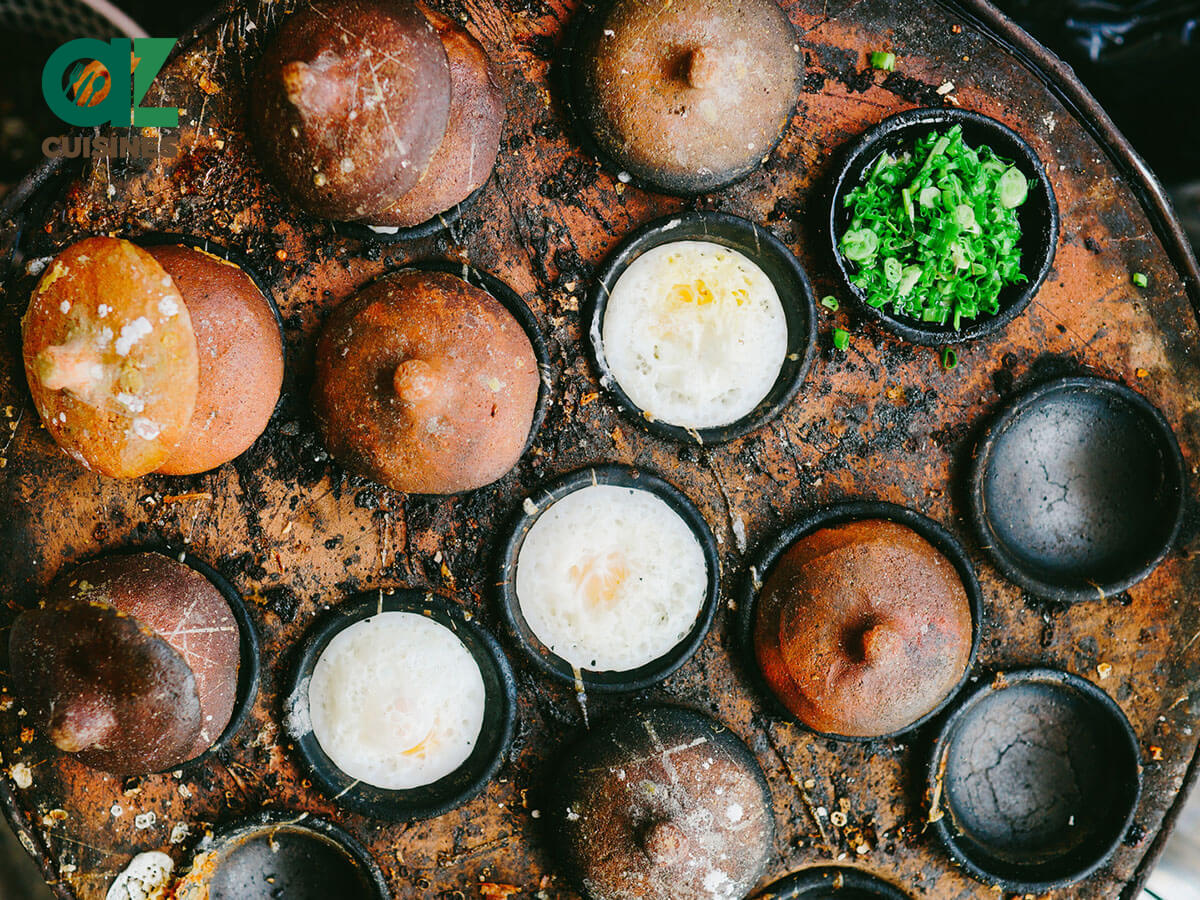

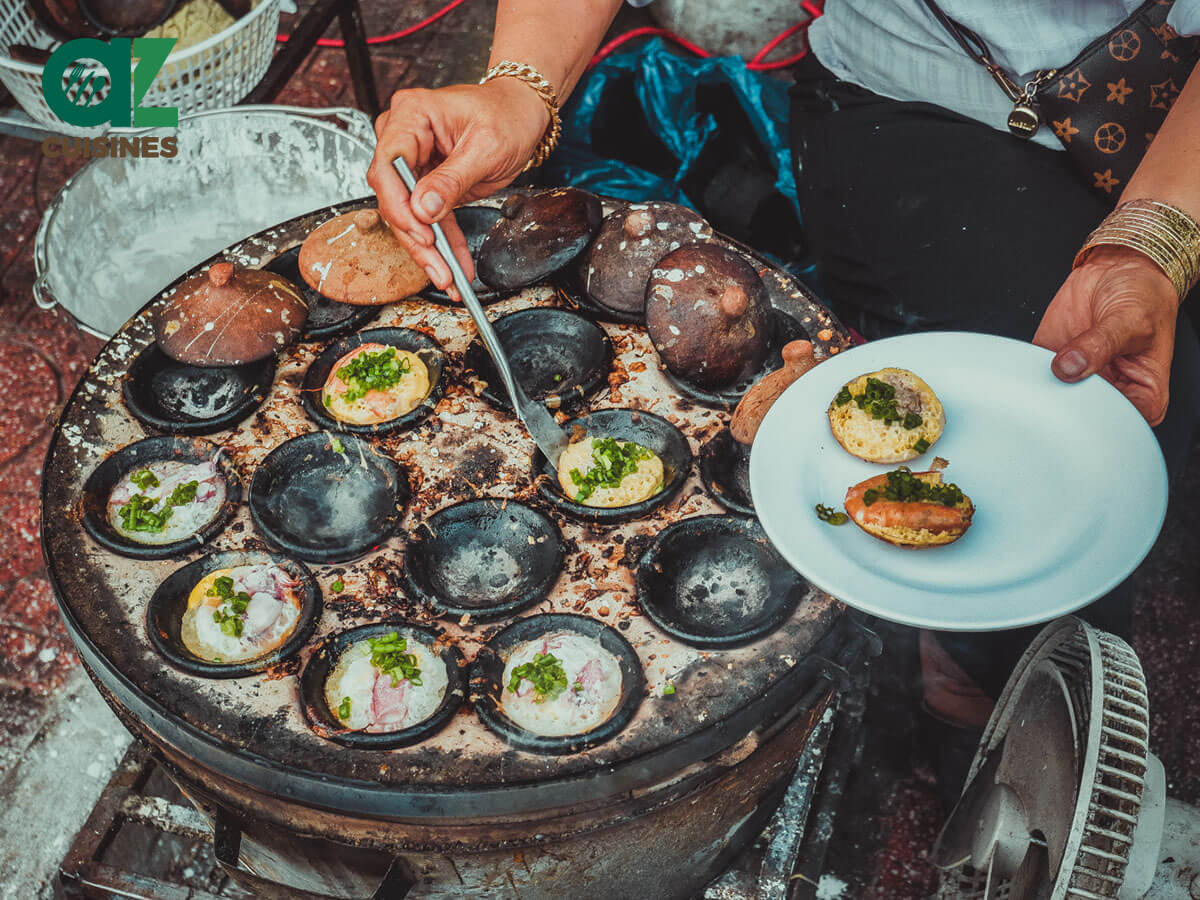
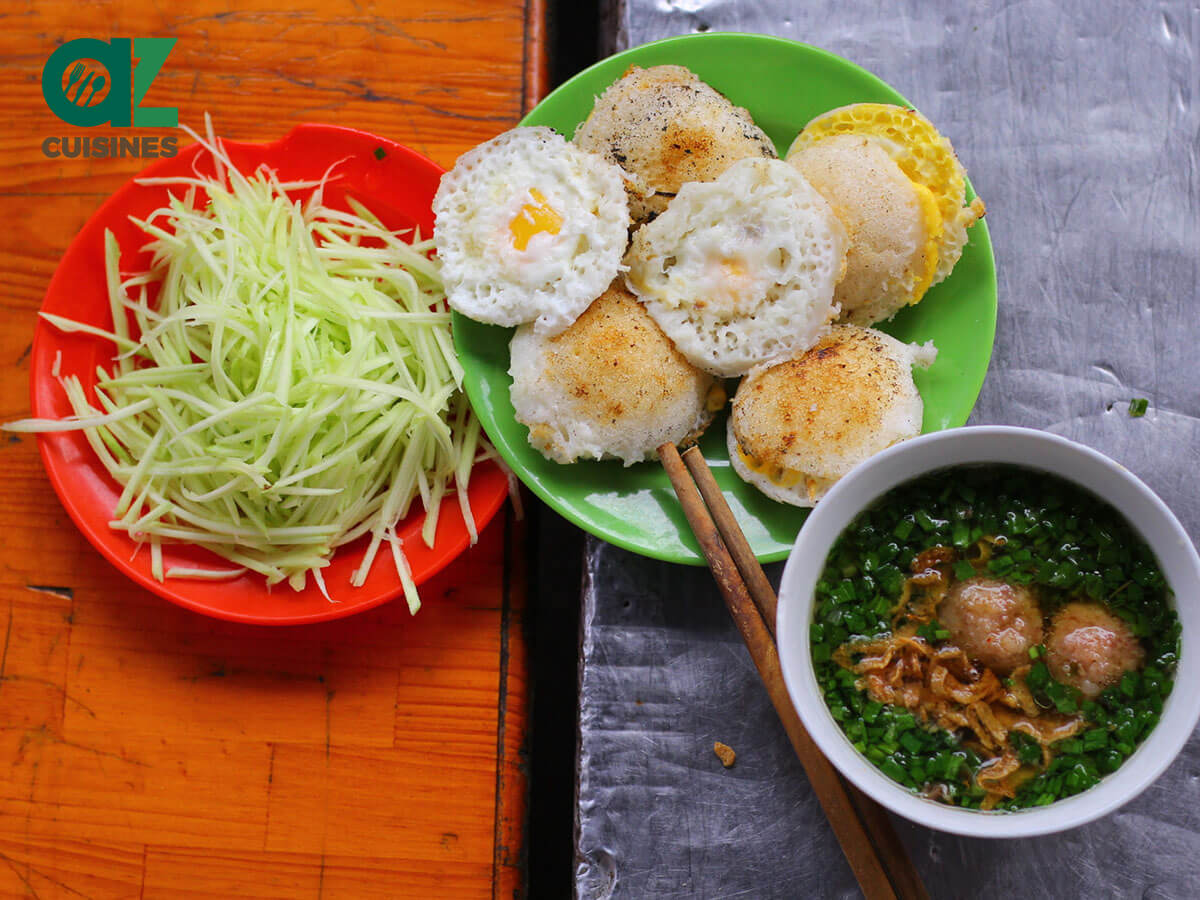
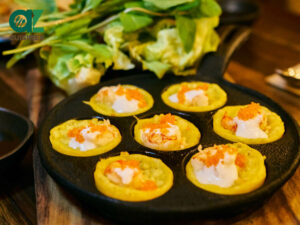
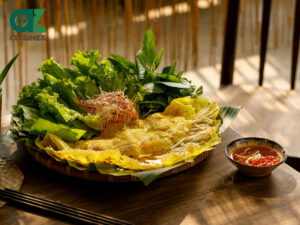
Truc Tran (Kris)
Senior Food Editor
Expertise
Home Cooking, Meal Planning, Recipe Development, Baking and Pastry, Food Editor, Cooking-video Maker, Vietnamese Food Evaluation Expert
Education
Truc Tran (Kris), an experienced food writer and editor, is great at exploring and describing global cuisines, from simple street food to fancy dining. In her writing, she skillfully mixes different flavors, cooking methods, and culinary traditions, showing the unique character of various cultures through their food and drinks. On azcuisines.com, Kris highlights her knowledge, especially in Asian cuisine and worldwide traditional dishes.